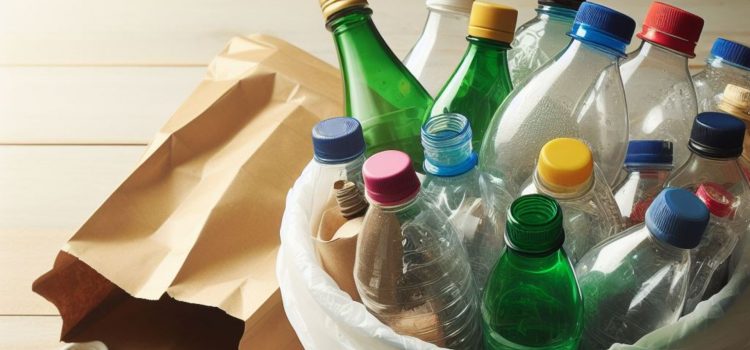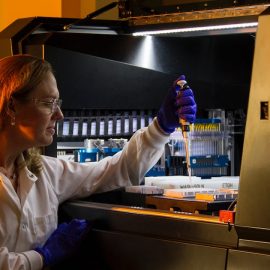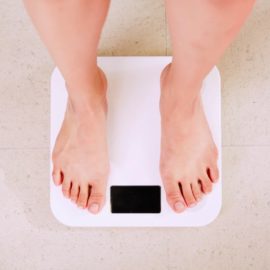
How many estrogenic chemicals are in our food? Are estrogenics used in herbicides?
According to Anthony G. Jay, estrogenics can be found in various sources from plants and fungi to artificial food coloring and plastic additives. Understanding the origin and function of each of these estrogenics helps us comprehend their impact on our health and the environment.
Continue reading to learn about some common places where you’ll find estrogenic chemicals.
Estrogenics in Food
Jay explains that there are three major estrogenic chemicals we commonly encounter through food: phytoestrogens, mycoestrogens, and red food coloring.
1. Phytoestrogens—estrogenics naturally produced by plants for their own growth needs. Common examples include lavender and marijuana, but the two most significant sources in our diets are flaxseed and soybeans. These foods pack in hundreds of thousands of micrograms of phytoestrogens, with no other sources coming close.
2. Mycoestrogens—estrogenics produced by fungi (like mold or yeast). The only presently recognized mycoestrogen is zearalenone (ZEA), which can enter our food primarily through cereals and other food products like coffee and chocolate.
3. Red food coloring—Studies have found many artificial red food dyes to be estrogenic. Jay writes that while some have been banned, Red No. 40 and Red No. 3 are still legal and prevalent in many foods. He suggests, however, that it’s best to avoid all red food dyes because they sometimes go by alternate names—for instance, Red No. 40 is also known as Allura Red AC and Red #17. There’s also a lack of sufficient research into other variations, so many red dyes may have estrogenic properties that we’re not yet aware of.
Estrogenics in Personal Care Products
Estrogenics are also commonly found in personal care products, such as sunscreen and skincare products. Jay points out three that are most prevalent:
1. Parabens—estrogenics used in fragrance products and cosmetics. While some researchers consider parabens to have less impact on your body than other estrogenics, Jay writes that there are many types of parabens with varying levels of estrogenic effects.
2. Triclosan and Alkylphenols (APEs)—estrogenics found in soaps, toothpastes, and detergents. APEs are primarily used to create suds in soaps. They’re left out of ingredient labels, so we’re often unaware that they’re in the products we use. Fortunately, while APEs are still used in the US, triclosan—a widely used antibacterial agent—is on its way out: The US declared it “not generally recognized as safe” and began removing it from germ-killing products.
3. Benzophenone (BP) and 4-Methylbenzylidene Camphor (4-MBC)—estrogenics commonly found in sunscreens and other personal care products. When exposed to UV light from the sun, these estrogenics can fuse to estrogen receptors and stay active much longer than usual.
Estrogenics in Plastic
Jay writes that there are also two types of estrogenics commonly found in plastic products:
1. Phthalates—estrogenics used primarily for making plastics clear, flexible and durable. Phthalates are found in a variety of everyday products from food products and plastic containers to personal care products like perfumes (although their use is restricted in children’s toy plastics). When foods and liquids come into contact with plastics, phthalates leach out into them and enter our bodies when we ingest them.
2. BPA and BPS (Bisphenol A & S)—estrogenics most widely used as an ingredient in plastic products. BPA has gained attention for its potential health risks, leading to BPA restrictions in certain products by the FDA and certain states. However, companies have simply pivoted to using BPS, which Jay argues has practically the same estrogenic effects. Thus, “BPA-free” alternatives often aren’t much healthier because they harbor similar estrogenic properties.
Estrogenics in Other Substances
Jay writes that herbicides and birth control pills are the sources of two other estrogenics we commonly encounter:
1. Atrazine—a common agricultural herbicide. The European Union banned atrazine in 2004, but the herbicide remains the second most used in the US.
(Shortform note: In Silent Spring, Rachel Carson explains that herbicides are specifically used to control the spread of plants—for example, to replace sagebrush lands with grasslands for livestock or to remove weeds. In particular, atrazine is mainly used to prevent grasses and broadleaf weeds from growing in crops such as corn, sorghum, sugarcane, wheat, macadamia nuts, and guava. In 2022, the US Environmental Protection Agency (EPA) proposed new rules to reduce atrazine runoff, including restricting how much can be used annually and banning its use when the soil is too wet, during rain or before a storm, and through aerial spraying.)
2. 17a-Ethinylestradiol (EE2)—an estrogenic widely used in oral contraceptive pills. According to Jay, EE2 likely has the longest-lasting effects of all the major estrogenics because it’s specially designed to mimic estrogen. It often enters water bodies through wastewater treatment plants, which aren’t designed to filter out such hormones.
(Shortform note: Seth Siegel, author of Troubled Water, estimates that oral contraceptive pills add over 10 million doses of synthetic estrogen to America’s wastewater. While the majority of EE2 in the environment comes from human waste, EE2 is also used for livestock farming and aquaculture activities. Some research suggests that EE2 contamination may actually come more from livestock wastewater than human wastewater.)






